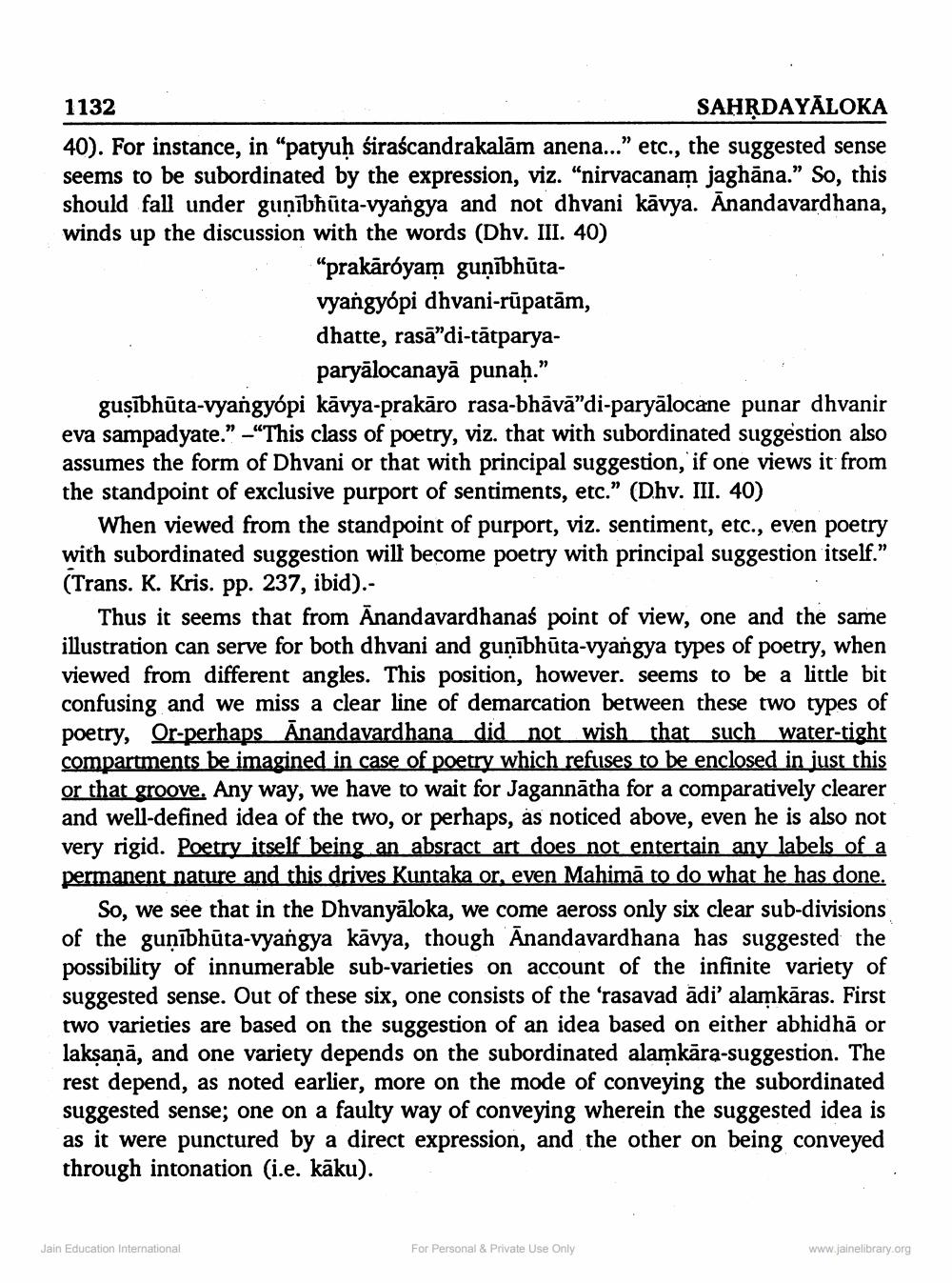________________
1132
SAHṚDAYALOKA
40). For instance, in "patyuḥ śiraścandrakalām anena..." etc., the suggested sense seems to be subordinated by the expression, viz. "nirvacanam jaghāna." So, this should fall under guṇībhūta-vyangya and not dhvani kāvya. Ānandavardhana, winds up the discussion with the words (Dhv. III. 40)
"prakāróyam guṇībhūtavyangyópi dhvani-rūpatām, dhatte, rasā"di-tātparyaparyālocanayā punaḥ."
guşībhūta-vyangyópi kāvya-prakāro rasa-bhāvā"di-paryālocane punar dhvanir eva sampadyate." -"This class of poetry, viz. that with subordinated suggestion also assumes the form of Dhvani or that with principal suggestion, if one views it from the standpoint of exclusive purport of sentiments, etc." (Dhv. III. 40)
When viewed from the standpoint of purport, viz. sentiment, etc., even poetry with subordinated suggestion will become poetry with principal suggestion itself." (Trans. K. Kris. pp. 237, ibid).
Thus it seems that from Anandavardhanaś point of view, one and the same illustration can serve for both dhvani and guṇībhūta-vyangya types of poetry, when viewed from different angles. This position, however. seems to be a little bit confusing and we miss a clear line of demarcation between these two types of poetry, Or-perhaps Anandavardhana did not wish that such water-tight compartments be imagined in case of poetry which refuses to be enclosed in just this or that groove. Any way, we have to wait for Jagannatha for a comparatively clearer and well-defined idea of the two, or perhaps, as noticed above, even he is also not very rigid. Poetry itself being an absract art does not entertain any labels of a permanent nature and this drives Kuntaka or, even Mahima to do what he has done.
So, we see that in the Dhvanyaloka, we come aeross only six clear sub-divisions of the guṇībhūta-vyangya kavya, though Anandavardhana has suggested the possibility of innumerable sub-varieties on account of the infinite variety of suggested sense. Out of these six, one consists of the 'rasavad ādi' alamkāras. First two varieties are based on the suggestion of an idea based on either abhidhā or lakṣaṇā, and one variety depends on the subordinated alamkara-suggestion. The rest depend, as noted earlier, more on the mode of conveying the subordinated suggested sense; one on a faulty way of conveying wherein the suggested idea is as it were punctured by a direct expression, and the other on being conveyed through intonation (i.e. kāku).
Jain Education International
For Personal & Private Use Only
www.jainelibrary.org




